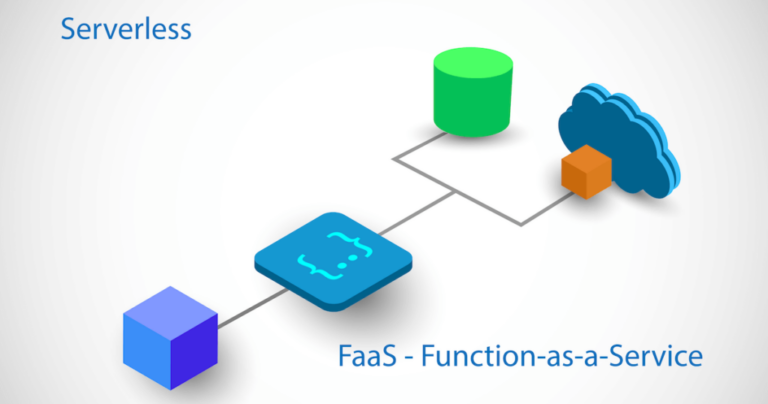In the past decade, the application development model has seen drastic shifts not only in adopting new tools and platforms but also in design thinking. Right from monolith to microservices and virtual machines to containers and then orchestration, we have seen applications and infrastructures to be developed, configured, and provisioned in a completely new architectural paradigm.
FaaS or Function as a Service is another add-on to the modern application development technology stack after container as a service. It is one of the fastest growing cloud service models that has disrupted developer-centric and operator-centric development, including deployment models of public, private, and hybrid cloud. Large enterprises as well as small and medium sized enterprises across world’s top industries like BFSI, IT & Telecom, Public Sector, Healthcare, and others have created global adoption for FaaS opportunities in different use-cases.
We can understand the growth and adoption of FaaS by its market size which is reported to reach $24,007.00 million by 2026, registering a CAGR of 29.7% from 2019 to 2026. According to another report by Reports and Data, the global FaaS market is expected to reach $53.08 Billion by 2028, at a CAGR of 30.90% during the forecast period.
FaaS is expected to remain dominant owing to numerous benefits provided to developers such as no server management, flexible scaling, optimized cost, and automated high availability. FaaS also solves problems of network engineers such as heavy computation problems. Let’s dive deeper into FaaS to understand what it is and then move to the use-cases and its significance across the organization’s system.
What Is Function As A Service and How Does It Work?
Function as a Service (FaaS) is a service built on a serverless architecture model. The FaaS concept revolves around providing a development platform that lets developers to quickly develop, test, deploy, and scale apps. A developer can use it to build custom solutions for the business, whether they’re building a mobile app, creating a web application, or developing a backend API. It frees developers from thinking about servers, databases, storage, networking, security, and other infrastructure issues. They can focus on simply writing code and let cloud providers such as AWS handle the rest. It is important to note here that these functions only solve the compute part. Developers have to make choices on the dark art of state management, since they wouldn’t be aware of where data is stored and managed, and how it is accessed.
Function as a Service is widely adopted to make microservices work which are designed and built using event-driven architecture. Microservices developed using event driven architectures are composed of loosely-coupled distributed services connected by asynchronous events. These kinds of systems or applications are a perfect fit to deal with uncertain requirements popup in real-time. It allows new services and data sources to be added or removed on the fly without hampering the existing application flow. FaaS supports the deployment of these types of applications with extensive scalability. Using the FaaS solutions such as AWS Lambda, Microsoft Function, etc., developers can deploy pieces of code known as functions on-demand without thinking about maintaining application servers.
When the function is called, it is your selected service provider that spins up a server, executes the function, then shuts down the server when its task is done. Unlike other models where software developers run applications on a dedicated server, FaaS based on serverless architecture only works when the function is being actively used. Once a function is executed, it can be closed again, allowing the same computing resources to be allocated elsewhere. With function-as-a-service, software developers have access to a platform that executes application logic on demand and where all application resources are secured and coordinated by the service provider.
Why Should Companies Care About Function As A Service?
FaaS offers tangible benefits to businesses. While the solution is highly effective for some businesses, it won’t suit everyone. Analyzing how FaaS works and the purpose behind its innovation with the varied business use-cases helps define the perfect area of implementation of FaaS in a system. For example, many businesses have found FaaS works best for them in running isolated, stateless code that performs a single function. Here are other aspects and benefits of FaaS that companies are attracted to and evaluating to modernize applications for cloud with the most innovative technological solutions available.
- Simplified Developer Logistics: Software development teams love the FaaS service model because it greatly simplifies the process for users to receive application updates and new code. With server infrastructure management being fully optimized and outsourced, software developers can spend more time doing their best work. This means greater agility, faster updates and greater responsiveness to customer needs.
- Highly Scalable: Cloud services are highly scalable by design and FaaS is no exception. The main difference is that the FaaS model allows individual tasks to scale automatically and independently based on their usage. It represents the most efficient use of computing resources to serve an application, as there is far less waste than scaling discrete microservices or the entire application.
- Lower Up-front Costs: The FaaS service model means that software development teams spend less money on hardware, operating systems, and other IT infrastructure that is more easily outsourced. Dedicated servers are expensive to purchase and are used less often, where the pay-as-you-go model offered by FaaS providers ensures that money is spent for the computing resources that developers actually need.
- Built-in Quality: Managed infrastructure comes with significant advantages in terms of availability, durability, security and other maintenance tasks that in the past had to be managed by software developers themselves.
How Can You Start Using Function As A Service?
FaaS is a “Ace-in-the-Sleeve” when you need a web, mobile or IoT app that is required to adapt and change. This is a market demand. When done right, FaaS decreases development times by taking the load off your team’s shoulders. As a result, your dev team can rapidly build, deploy and extend your app. All they have to do is build the code as individual functions and the platform does the rest. It is also good for high-volume and embarrassingly parallel workloads. You will never have to worry again about forgetting SSH keys or troubleshooting the infrastructure. FaaS will take care of that. FaaS can be used practically to develop different applications and development environments such as applications web/mobile applications, data/stream processing, online chatbots, backend for IoT devices, format conversion, encoding, and more.
Splitting Microservices Into Multiple Functions: Is It For Your Business?
To answer this question, it is important to first adopt a pragmatic lens through which to judge and apply microservices + FaaS to your technology stack. Microservices architecture, though provided the speed at which developers make changes to the application. This evolutionary technology or app architecting pattern allowed us to release new features and functionality to the customer to test whether we can achieve the expected positive outcomes as a result of these changes. But the microservices deployment requires significant support for system maintenance, system monitoring, and information submission. Maintaining infrastructure and configuration requirements sometimes overcomes the advantages of using the microservices. FaaS by leveraging serverless deployment advantages, fits better into many application development use cases. As a technology practitioners, it is important to keep up with the latest technology but it’s also equally our responsibility to know when to apply it in the context of our existing technology and IT departments.




